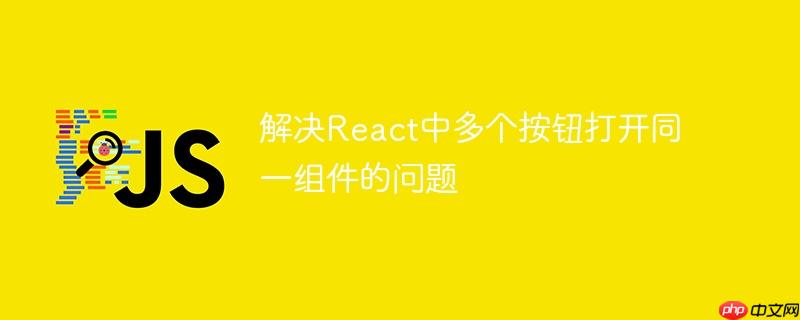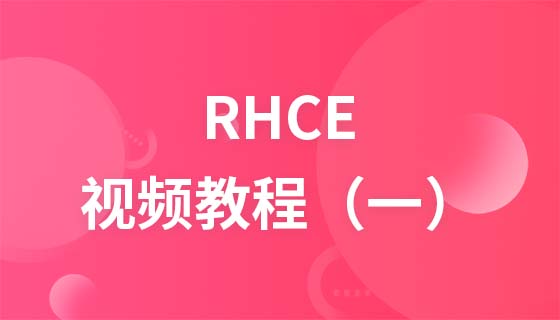
第一段引用上面的摘要:
本文旨在解决React应用中,多个按钮点击后总是打开同一个组件的问题。通过分析问题代码,我们将探讨如何使用状态管理来控制不同组件的显示与隐藏,并提供相应的代码示例,帮助开发者避免类似错误,构建更健壮的React应用。
在React开发中,经常会遇到需要通过多个按钮来控制不同组件显示和隐藏的场景。一个常见的错误是,所有按钮都共享同一个状态变量来控制所有组件的显示,导致点击任何一个按钮都会打开同一个组件。本文将通过一个具体的例子,详细讲解如何正确地实现这一功能。
问题分析
在提供的代码示例中,父组件 Messages 使用一个名为 showInfo 的状态变量来控制三个子组件 InfoMessage、SuccessMessage 和 ErrorMessage 的显示与隐藏。由于所有按钮都将 showInfo 设置为 true,导致点击任何一个按钮都会同时打开所有组件。
解决方案
要解决这个问题,我们需要为每个组件维护独立的状态,或者使用一个状态变量来区分应该显示哪个组件。以下是使用单个状态变量来区分显示组件的解决方案:
使用一个状态变量来表示当前要显示的组件类型:将 showInfo 替换为一个名为 msgStatus 的状态变量,它的值可以是 "info"、"success" 或 "error",分别对应要显示的组件。
修改按钮的 onClick 事件处理函数:每个按钮的 onClick 事件处理函数应该设置 msgStatus 为对应的值。例如,"open info message" 按钮应该设置 msgStatus 为 "info"。
修改子组件的 open 属性:每个子组件的 open 属性应该根据 msgStatus 的值来判断是否显示。例如,InfoMessage 的 open 属性应该设置为 msgStatus === "info"。
代码示例
以下是修改后的父组件代码:
import React, { useState } from 'react';
import { Stack, Button } from '@mui/material'; // 假设使用了 Material-UI
import { InfoMessage } from './InfoMessage'; // 假设组件在单独的文件中
import { SuccessMessage } from './SuccessMessage';
import { ErrorMessage } from './ErrorMessage';
export const Messages = () => {
const [msgStatus, setMsgStatus] = useState("");
return (
<Stack>
<Button
onClick={() => setMsgStatus("info")}
>
open info message
</Button>
<InfoMessage open={msgStatus === "info"} onClose={()=> setMsgStatus("")} />
<Button
onClick={() => setMsgStatus("success")}
>
open success message
</Button>
<SuccessMessage open={msgStatus === "success"} onClose={()=> setMsgStatus("")} />
<Button
onClick={()=> setMsgStatus("error")}
>
open error message
</Button>
<ErrorMessage open={msgStatus === "error"} onClose={() => setMsgStatus("")} />
</Stack>
)
}子组件代码 (示例 - InfoMessage)
子组件的代码基本保持不变,只需要确保 onClose 函数能够正确地更新父组件的状态,将其设置为空字符串,从而关闭当前显示的组件。
import React from 'react';
import Snackbar from '@mui/material/Snackbar';
import Alert from '@mui/material/Alert';
import AlertTitle from '@mui/material/AlertTitle';
import IconButton from '@mui/material/IconButton';
import CloseIcon from '@mui/icons-material/Close';
import Typography from '@mui/material/Typography';
interface InfoMessageProps {
open: boolean;
onClose: () => void;
}
export const InfoMessage = ({ open, onClose }: InfoMessageProps) => {
const handleClose = (): void => {
onClose();
};
return (
<Snackbar
open={open}
autoHideDuration={4000}
anchorOrigin={{ vertical: 'top', horizontal: 'right' }}
onClick={handleClose}
>
<Alert
sx={{
width: '487px',
height: '104px',
paddingTop: '20px',
paddingLeft: '20px',
backgroundColor: '#FDFDFD',
}}
icon={false}
action={(
<IconButton
aria-label="close"
color="inherit"
size="small"
onClick={handleClose}
>
<CloseIcon fontSize="inherit" />
</IconButton>
)}
>
<AlertTitle sx={{ paddingRight:'80px' }}>
<Typography variant='headings.h4'>title</Typography>
</AlertTitle>
<Typography variant='captions.default'>Insert message here</Typography>
</Alert>
</Snackbar>
);
};注意事项
总结
通过为每个组件维护独立的状态,或者使用一个状态变量来区分应该显示哪个组件,可以有效地解决多个按钮打开同一组件的问题。在实际开发中,应根据具体的需求选择合适的解决方案。理解React的状态管理机制是构建健壮和可维护的React应用的关键。
以上就是解决React中多个按钮打开同一组件的问题的详细内容,更多请关注php中文网其它相关文章!

每个人都需要一台速度更快、更稳定的 PC。随着时间的推移,垃圾文件、旧注册表数据和不必要的后台进程会占用资源并降低性能。幸运的是,许多工具可以让 Windows 保持平稳运行。




Copyright 2014-2025 https://www.php.cn/ All Rights Reserved | php.cn | 湘ICP备2023035733号